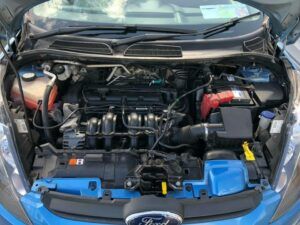Under The Bonnet

Under the bonnet can be a daunting part of your driving test. Knowing the engine parts is so important, not only to pass your test but to keep your engine in the best possible condition. Knowing when to add oil and how to apply it is vital to the health of your engine as driving a car low on oil increases wear and tear and could potentially make your engine seize up.
First of all, you need to know how to open the engine. Usually, there is a bonnet release lever at your right knee where the accelerator would be positioned. In some cars, the lever would be positioned on the passenger side where your left knee would be positioned.
Once opened, the tester would usually ask “how would you check the oil level?” The tester doesn’t really need to know a mechanical answer, an answer as simple as “take the dip-stick out, wipe the dip-stick with a rag, re-insert and take back out to see where your oil level is on the dip-stick.” A simple answer like this is more than enough. To add oil. all you do is open the oil cap which is located on the engine. ( black cap on the engine block.)
Adding windscreen washer fluid, the tricky part is locating where to insert the fluid. All cars are different and place their fluid tanks in different places. Usually, they are big caps with a picture of a windscreen and a wiper on the cap. ( Blue cap on the right-hand side on the diagram.)
Another question is about coolant. Coolant is vital to keep your engine cool when driving. Coolant is normally a big tank with pink fluid inside. Adding coolant is easy enough but so important to do when the engine is cold. Top coolant up to between the minimum and maximum lines located on the tank. ( See top left on the diagram.)
Brake Fluid could be another question the tester would like you to explain. Brake fluid is normally in a small tank with a cap and a diagram on the cap. The diagram looks like (!) on the cap. If you see your brake fluid is low it is very important to top up with more brake fluid.
Warning lights on your dashboard are a great help in telling you you need to top up fluids. If the light comes on the dash the fluid is at a critical point and must be topped up immediately. A red oil can will appear when your car needs oil or a (!) will appear when you need brake fluid. Acting fast could save your engine from failure,